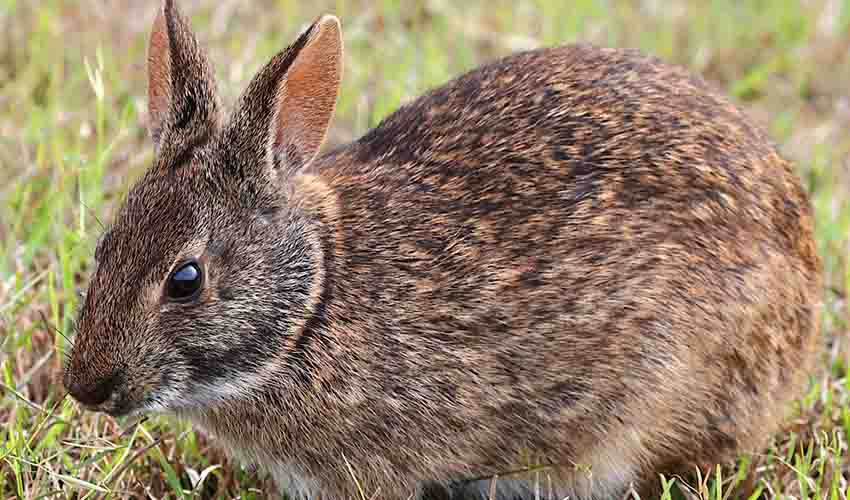Unlike its more familiar cousin, the eastern cottontail, the marsh rabbit is perfectly adapted for life in soggy environments, where it makes its home among cattails, reeds, and dense marsh grasses. Its appearance reflects its habitat: marsh rabbits are stockier, with shorter ears and legs than most other rabbits, and they have a dark brown coat that blends seamlessly into the muddy, shadowy wetlands. One distinctive feature is their very short tail, which is dark underneath rather than the white “cotton” seen on most rabbits. This trait and their preference for watery environments make them quite unique among North American rabbits.
What sets marsh rabbits apart most dramatically is their relationship with water. While many rabbits avoid wet conditions, marsh rabbits are strong swimmers and often dive into ponds, streams, or marshes to escape predators. They can paddle with ease and even hide underwater with just their noses above the surface. Their ability to move between land and water gives them an advantage in habitats that many other mammals find difficult to navigate. They also create intricate runways and tunnels through tall grasses, which they use as both feeding paths and escape routes. Their diet reflects their environment, too: instead of relying heavily on clover or garden plants like other rabbits, marsh rabbits feed on aquatic vegetation, including grasses, water hyacinths, and even the shoots of marsh plants.
Behaviorally, marsh rabbits are solitary and primarily nocturnal. During the day, they rest in hidden forms—shallow depressions tucked into thick vegetation—and emerge at dusk to feed. They are generally shy and elusive, often disappearing into water or reeds at the first sign of disturbance. Like other rabbits, they reproduce quickly, with several litters each year, but their populations can be vulnerable to habitat loss, as wetlands are drained or developed.
Distribution
 United States
United StatesAnything we've missed?
Help us improve this page by suggesting edits. Glory never dies!
Suggest an editGet to know me
Terrestrial / Aquatic
Altricial / Precocial
Polygamous / Monogamous
Dimorphic (size) / Monomorphic
Active: Diurnal / Nocturnal
Social behavior: Solitary / Pack / Herd
Diet: Carnivore / Herbivore / Omnivore / Piscivorous / Insectivore
Migratory: Yes / No
Domesticated: Yes / No
Dangerous: Yes / No




